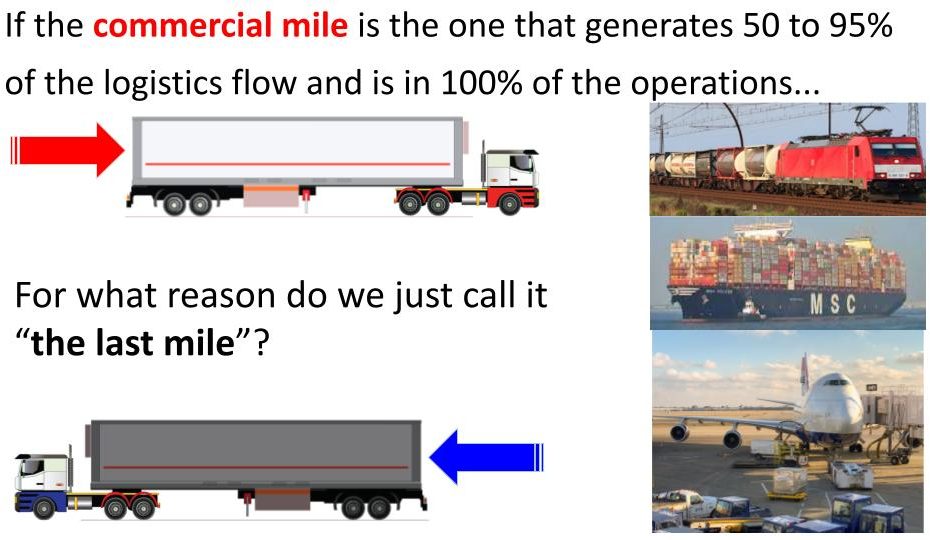In telecommunications as in logistics, the role of the client seems to go through the tale more frequently that the path of reality
Although in the cultural environment of metropolitan marketing it is usually referred to as the «commercial mile» to the glamorous space that receives and attracts the select and foot customer, isn’t it in the first and last mile where logistics are closely related to with the person interested in the load?
A deep and very broad debate is undoubtedly necessary, however, to begin with, we could affirm that it is at the extremes of the logistics route where the customer’s interest lies, and it is there that someone sends or someone receives, or someone buys and someone sells, and it is one of those actors who makes the logistics contract, and it is who takes that logistics who generates the chain of consolidation, transport and deconsolidation until reaching the destination.
Thus, the absolute majority of local, regional and global logistics is connected to someone who is close to the customer, from one of the two ends. In what is not transoceanic (at least for now), there will surely be a private operator from its own site, country or region and it will be the one who will commit face to face, even if it is in an intermodal universe in which it will contract other actors to carry the transport unit that will carry the load.
That actor is in the first and/or last mile, so why do we call him «last», if he is not only first, but also last and many times «from end to end»?
Like the intermodal culture that we at AIMAS propose to understand is based on the advantageous economic demonstration that demonstrates the integrated (and cultural) model that fundamentally results from contracting at one of the points face to face with the client, and that seeks the best long-term agreements in the trunking of the load, of the transport unit, is that we suggest, by way of proposal, define as:
Commercial mile: to the space of contact with the client with which the logistics and transport contract is generated, since this operational actor is the one who is responsible to the client and who is the one who seeks the best offer for it, benefiting to the entire chain of actors that will complete the chain thanks to the contract achieved by the operator of that first (or last) section of the chain linkage.
There is still much to discuss.
It is clear that every start and finish of a trip is carried out in a high percentage by the same operator that has maked the business and, for the conceptual framework of the ITE, the Intermodal Transport Economy that surrounds the 53-foot container, that actor is mostly part of the logistics of road cargo transportation and that is a local entrepreneur in each country or region.
We invite you to express your contributions in the networks of::
Linkedin: https://www.linkedin.com/feed/update/urn:li:activity:6902315808026873856 (Spanish)
Twitter: https://twitter.com/AIMASIntermodal/status/1496551971729416194 (Spanish)
Bahía Blanca, Febrero 14 de 2022
Asociación Intermodal de América del Sur
